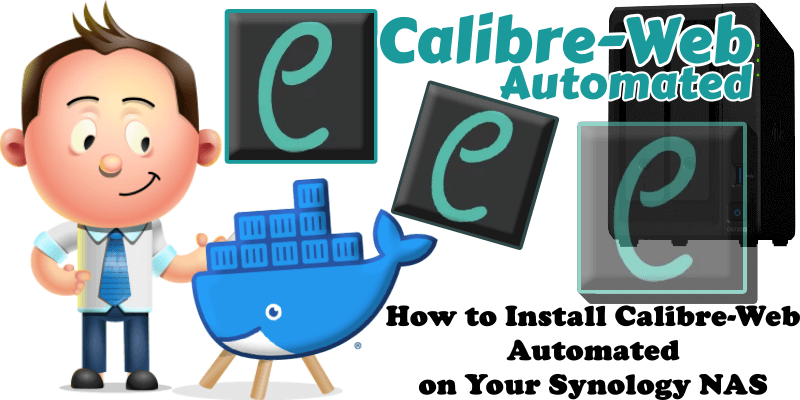
Calibre, while a fantastic tool for its age, has several problems when containerized, including its reliance on a KasmVNC server instance for the UI, which is near impossible to use on mobile and is relatively resource-heavy if you’re running a small, lower power server like I am. For many, Calibre-Web has really swooped in to save the day, offering an alternative to a containerized Calibre instance that’s resource-light and with a much more modern UI to boot. However, when compared to full-fat Calibre, it unfortunately lacks a few core features leading many to run both services in parallel, each serving to fill in where the other lacks, resulting in an often clunky, imperfect solution. Calibre-Web Automated aims to be an all-in-one solution, combining the modern lightweight web UI from Calibre-Web with the robust, versatile feature set of Calibre, with a slew of extra features and automations thrown in on top. In this step by step guide I will show you how to install Calibre-Web Automated on your Synology NAS using Docker & Portainer.
STEP 1
Please Support My work by Making a Donation.
STEP 2
Install Portainer using my step by step guide. If you already have Portainer installed on your Synology NAS, skip this STEP. Attention: Make sure you have installed the latest Portainer version.
STEP 3
Go to File Station and open the docker folder. Inside the docker folder, create one new folder and name it autocalibreweb. Follow the instructions in the image below.
Note: Be careful to enter only lowercase, not uppercase letters.
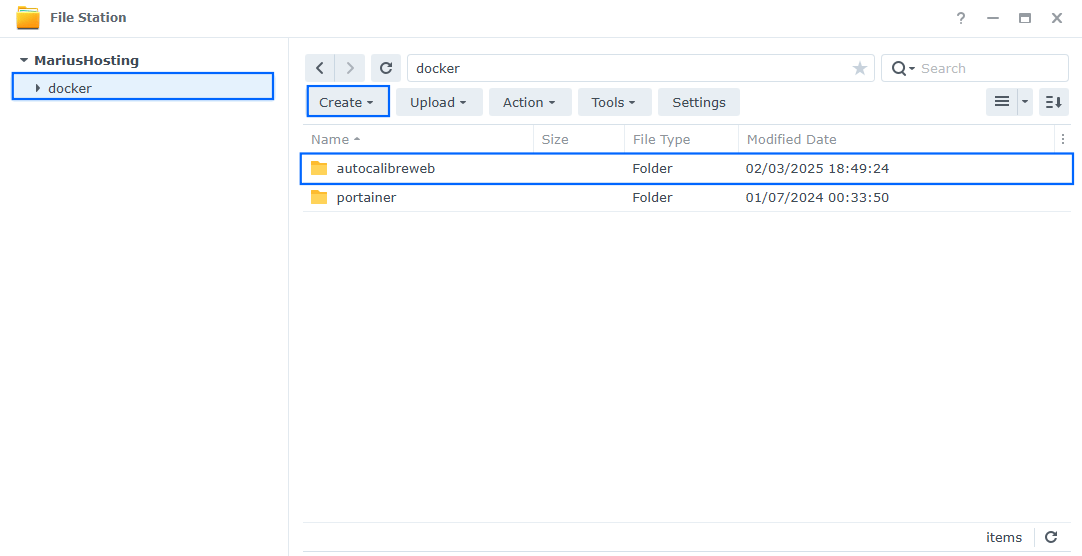
STEP 4
Now create four new folders inside the autocalibreweb folder that you have previously created at STEP 3, and name them config, ingest, library, plugins. Follow the instructions in the image below.
Note: Be careful to enter only lowercase, not uppercase letters.
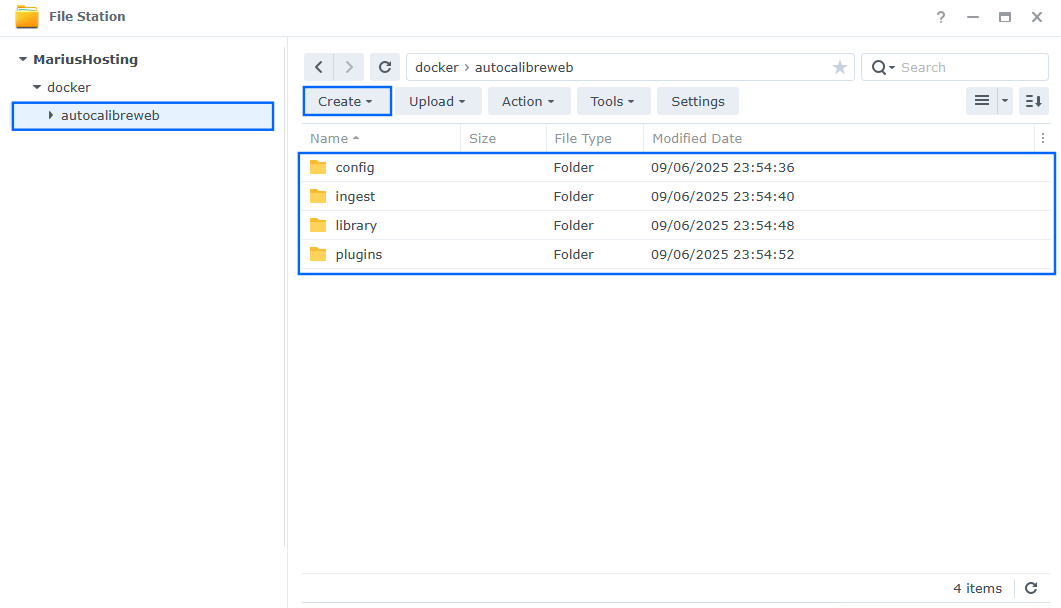
STEP 5
Log into Portainer using your username and password. On the left sidebar in Portainer, click on Home then Live connect. Follow the instructions in the image below.
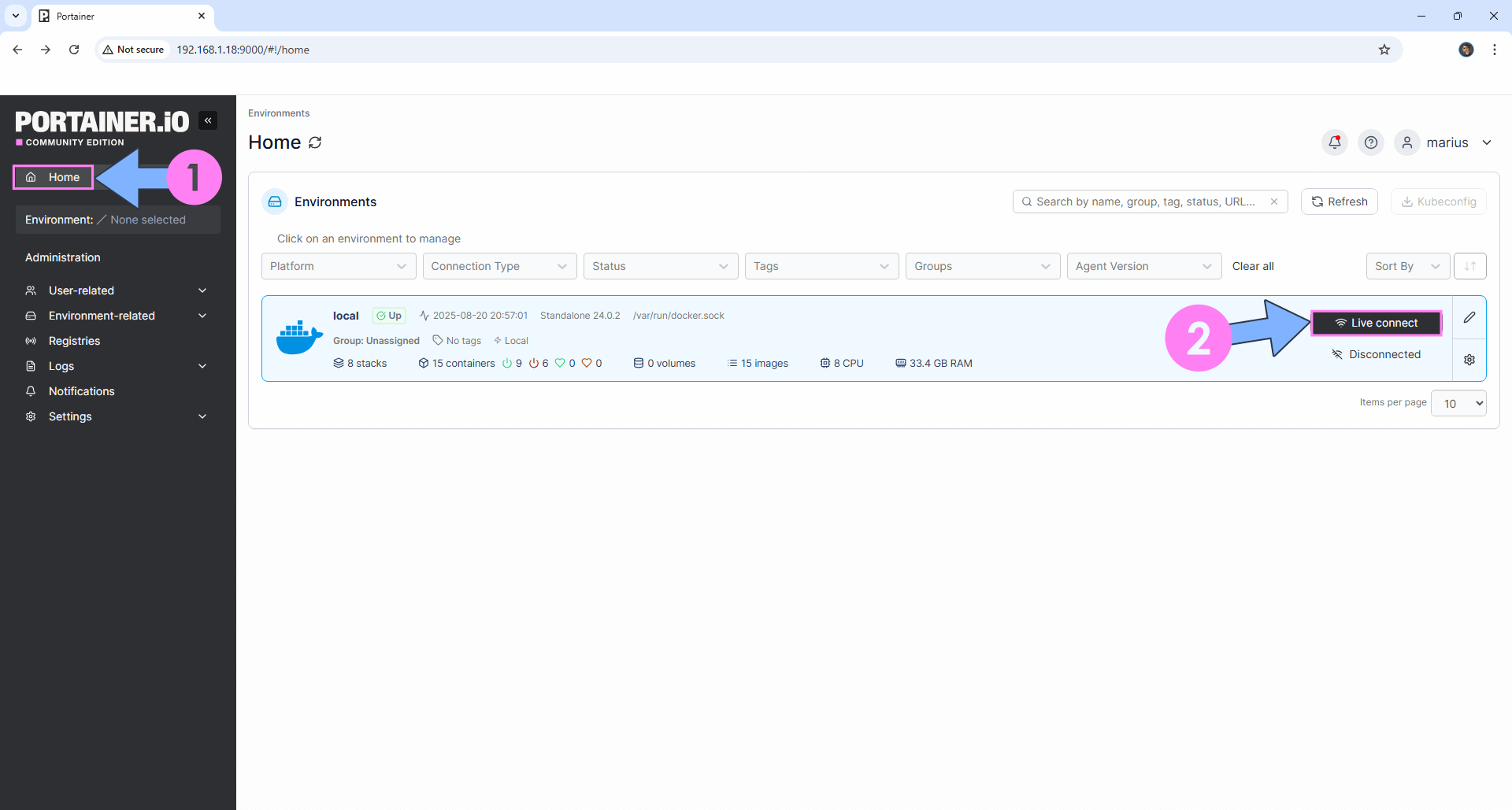
On the left sidebar in Portainer, click on Stacks then + Add stack. Follow the instructions in the image below.
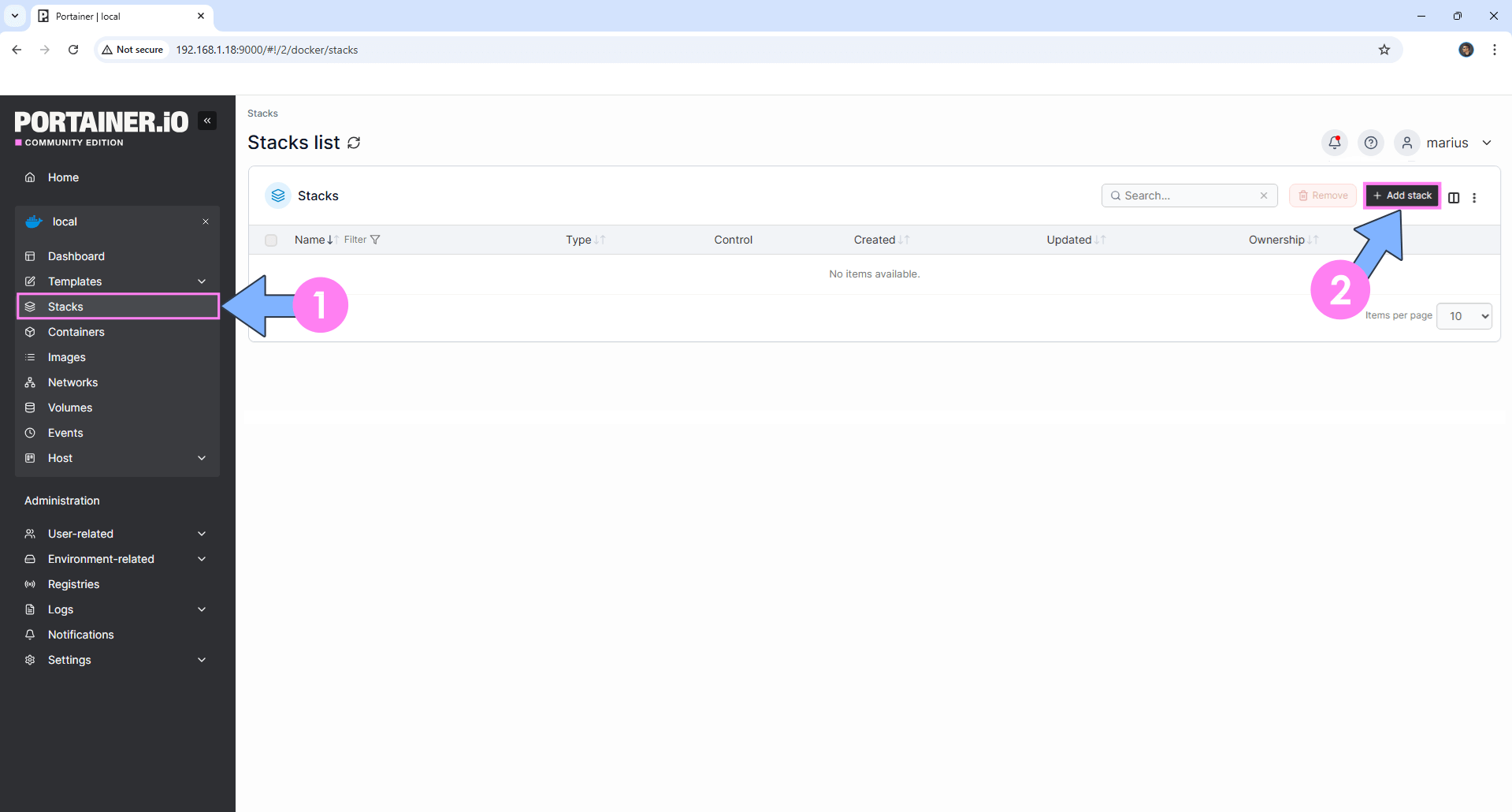
STEP 6
In the Name field type in autocalibreweb. Follow the instructions in the image below.
services:
calibre-web-automated:
image: crocodilestick/calibre-web-automated:latest
container_name: Calibre-WEB-AUTOMATED
healthcheck:
test: ["CMD-SHELL", "nc -z 127.0.0.1 8083 || exit 1"]
interval: 10s
timeout: 5s
retries: 3
start_period: 90s
environment:
PUID: 1026
PGID: 100
TZ: Europe/Bucharest
#HARDCOVER_TOKEN: API_KEY #https://docs.hardcover.app/api/getting-started/
volumes:
- /volume1/docker/autocalibreweb/config:/config:rw
- /volume1/docker/autocalibreweb/ingest:/cwa-book-ingest:rw
- /volume1/docker/autocalibreweb/library:/calibre-library:rw
- /volume1/docker/autocalibreweb/plugins:/config/.config/calibre/plugins:rw
ports:
- 8213:8083
restart: on-failure:5
Note: Before you paste the code above in the Run command area below, change the value numbers for PUID and PGID with your own values. (Follow my step by step guide on how to do this.)
Note: Before you paste the code above in the Run command area below, change the value for TZ. (Select your current Time Zone from this list.)
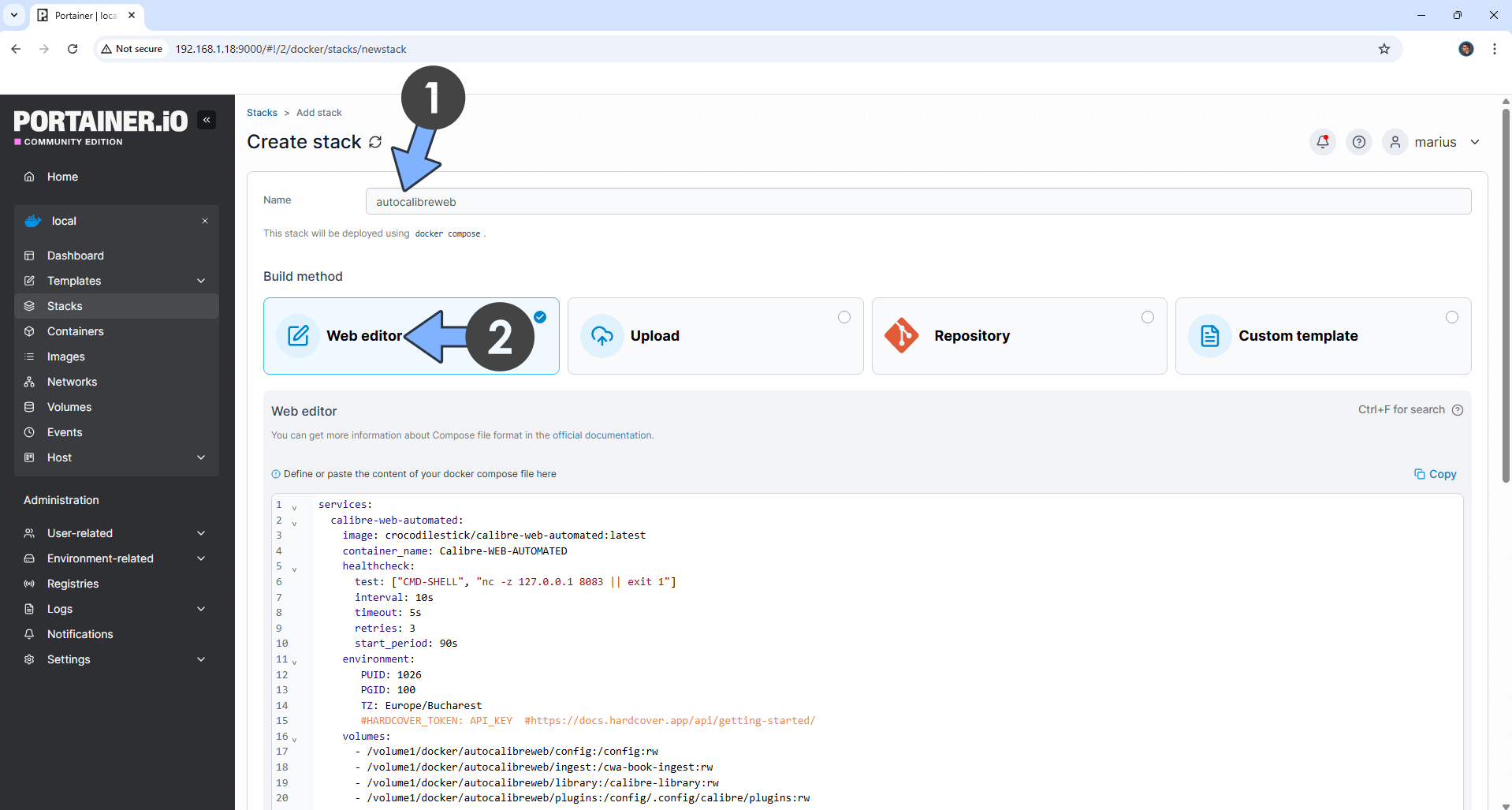
STEP 7
Scroll down on the page until you see a button named Deploy the stack. Click on it. Follow the instructions in the image below. The installation process can take up to a few minutes. It will depend on your Internet speed connection.
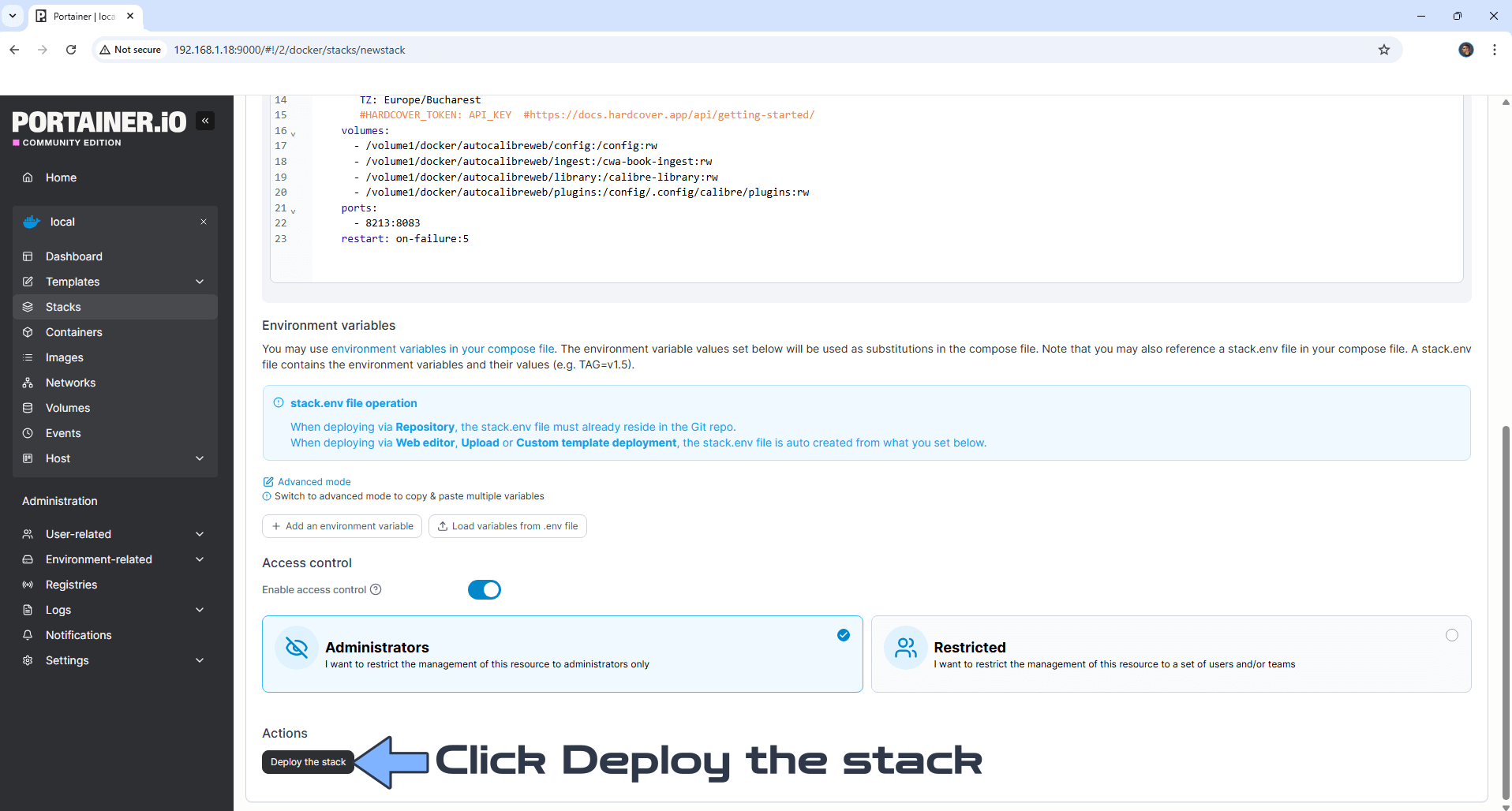
STEP 8
If everything goes right, you will see the following message at the top right of your screen: “Success Stack successfully deployed“.
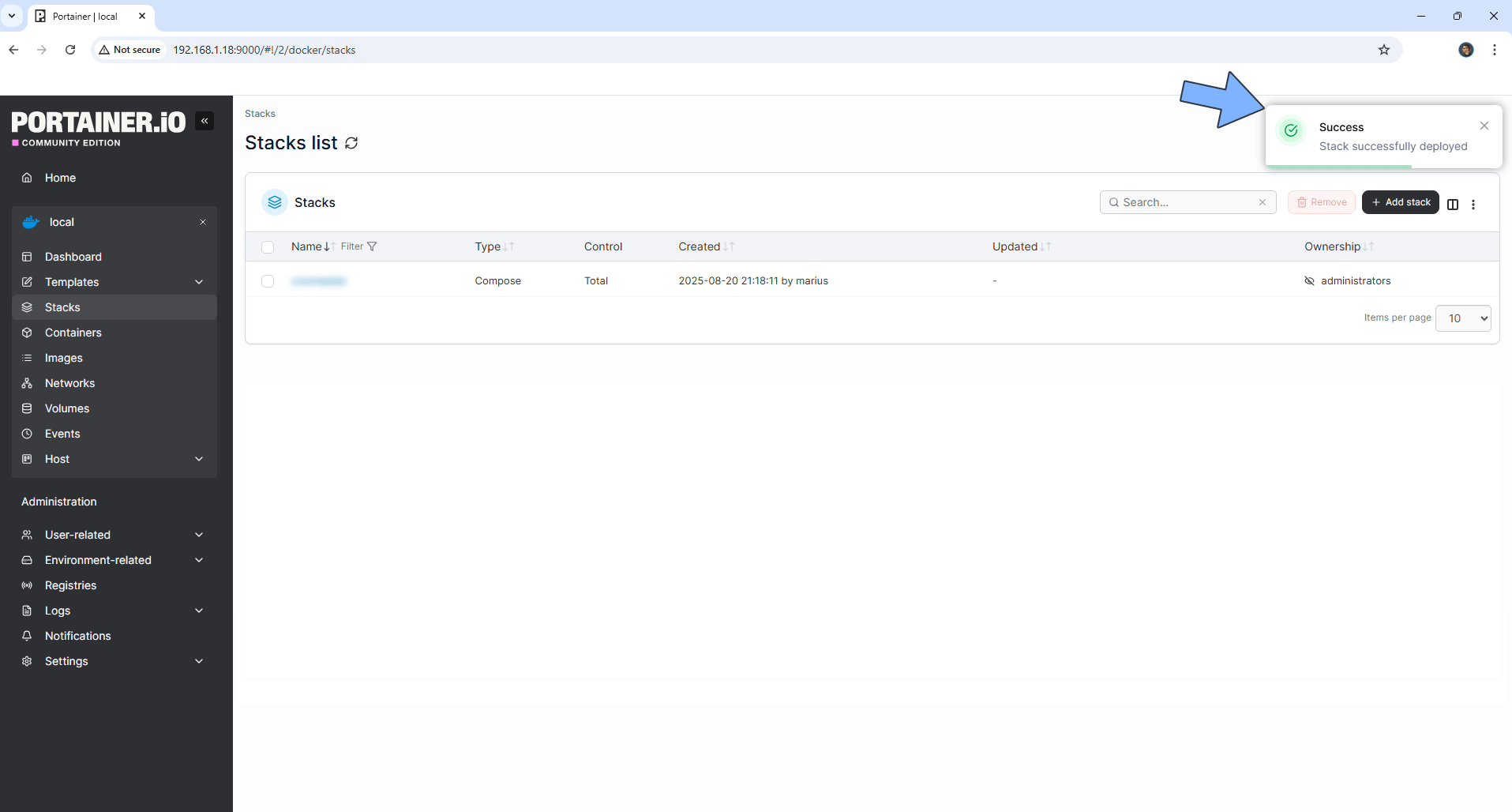
STEP 9
🟢Please Support My work by Making a Donation. Almost 99,9% of the people that install something using my guides forget to support my work, or just ignore STEP 1. I’ve been very honest about this aspect of my work since the beginning: I don’t run any ADS, I don’t require subscriptions, paid or otherwise, I don’t collect IPs, emails, and I don’t have any referral links from Amazon or other merchants. I also don’t have any POP-UPs or COOKIES. I have repeatedly been told over the years how much I have contributed to the community. It’s something I love doing and have been honest about my passion since the beginning. But I also Need The Community to Support me Back to be able to continue doing this work.
STEP 10
The installation process can take up to a few seconds/minutes. It will depend on your Internet speed connection. Now open your browser and type in http://Synology-ip-address:8213 You will be prompted to add the default Username and Password. Click Login.
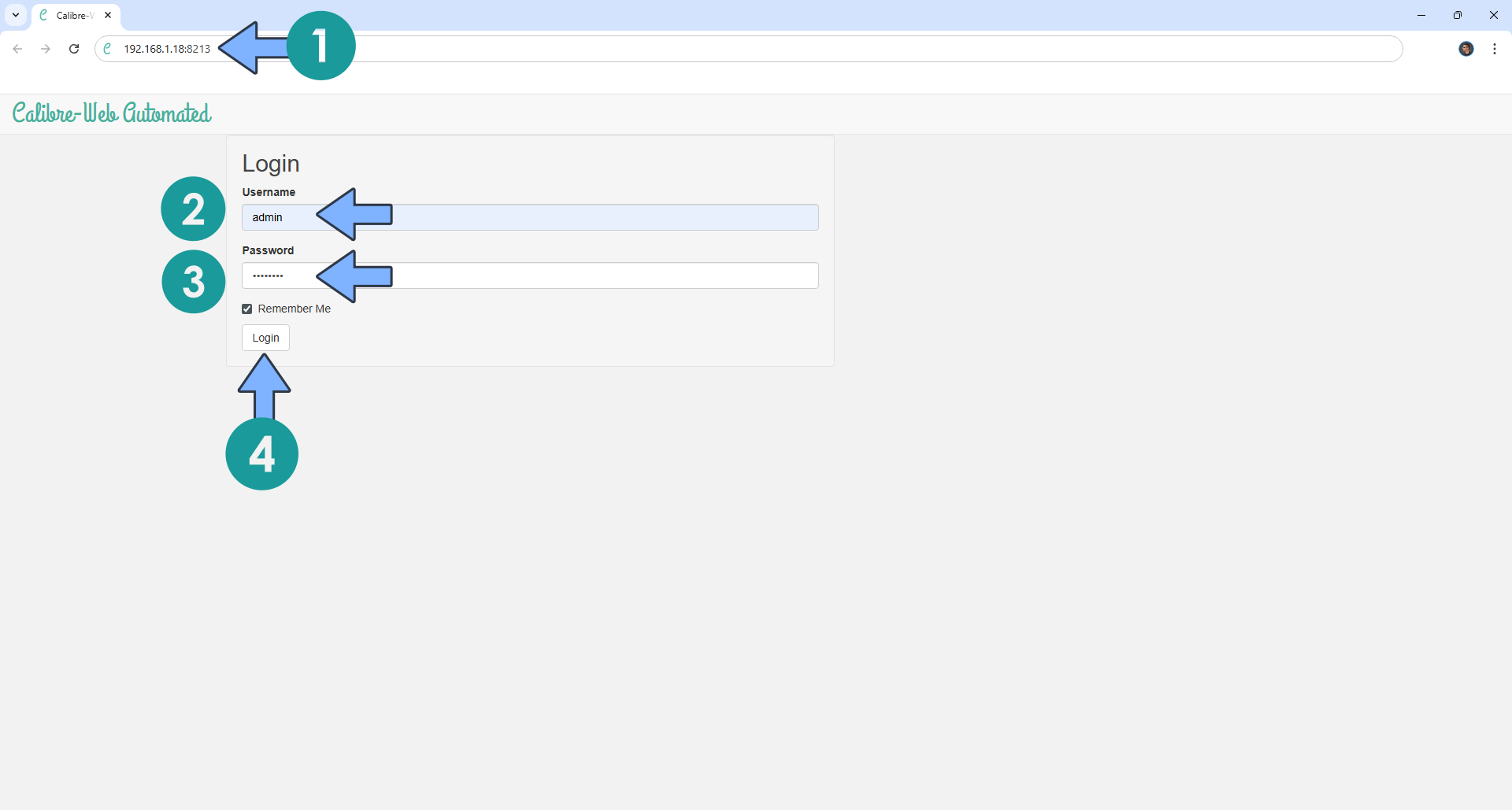
STEP 11
Click the Switch Theme tab. Follow the instructions in the image below.
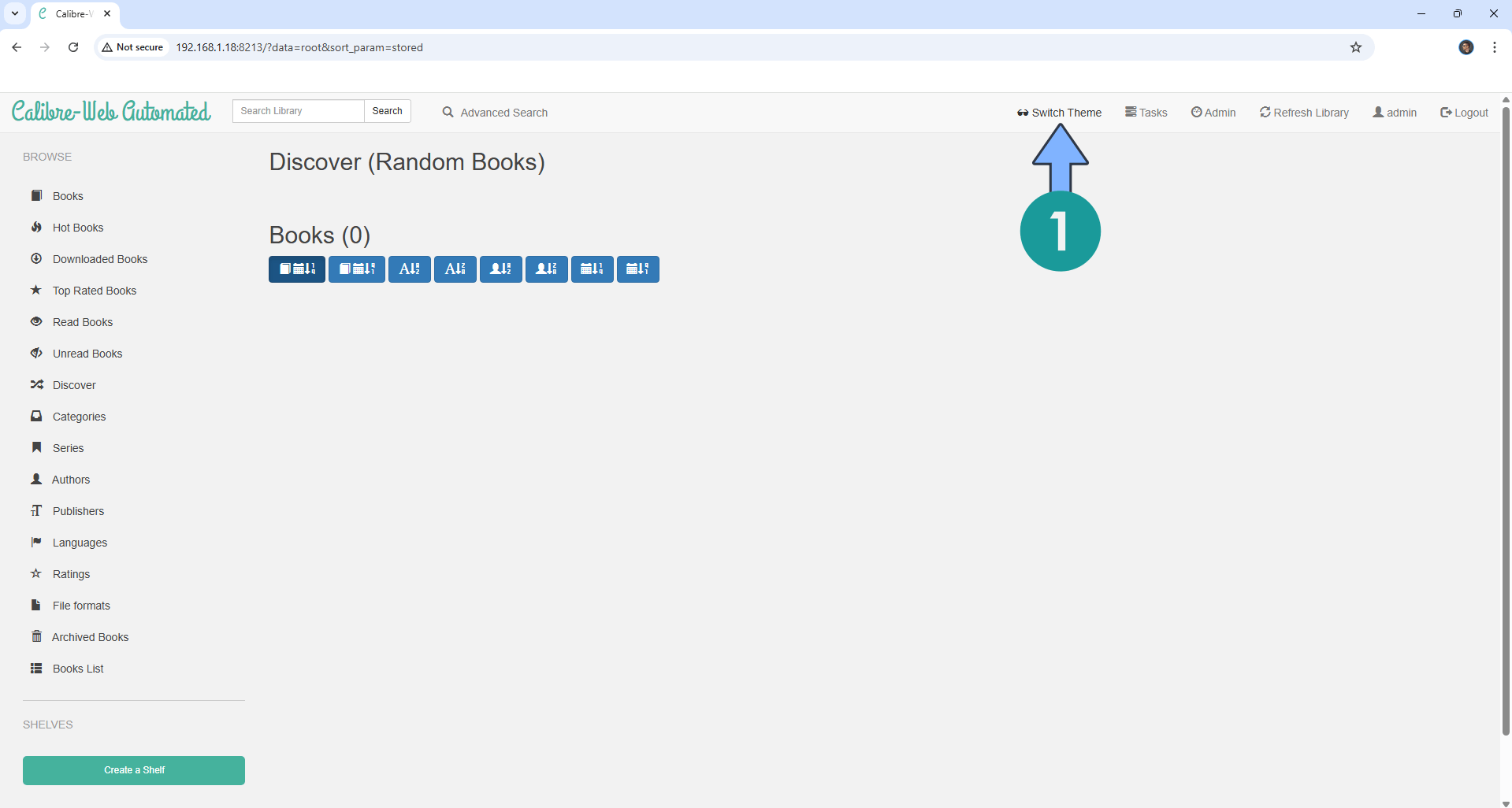
STEP 12
Your Calibre-Web Automated page will look like this. Go straight to the next STEP.
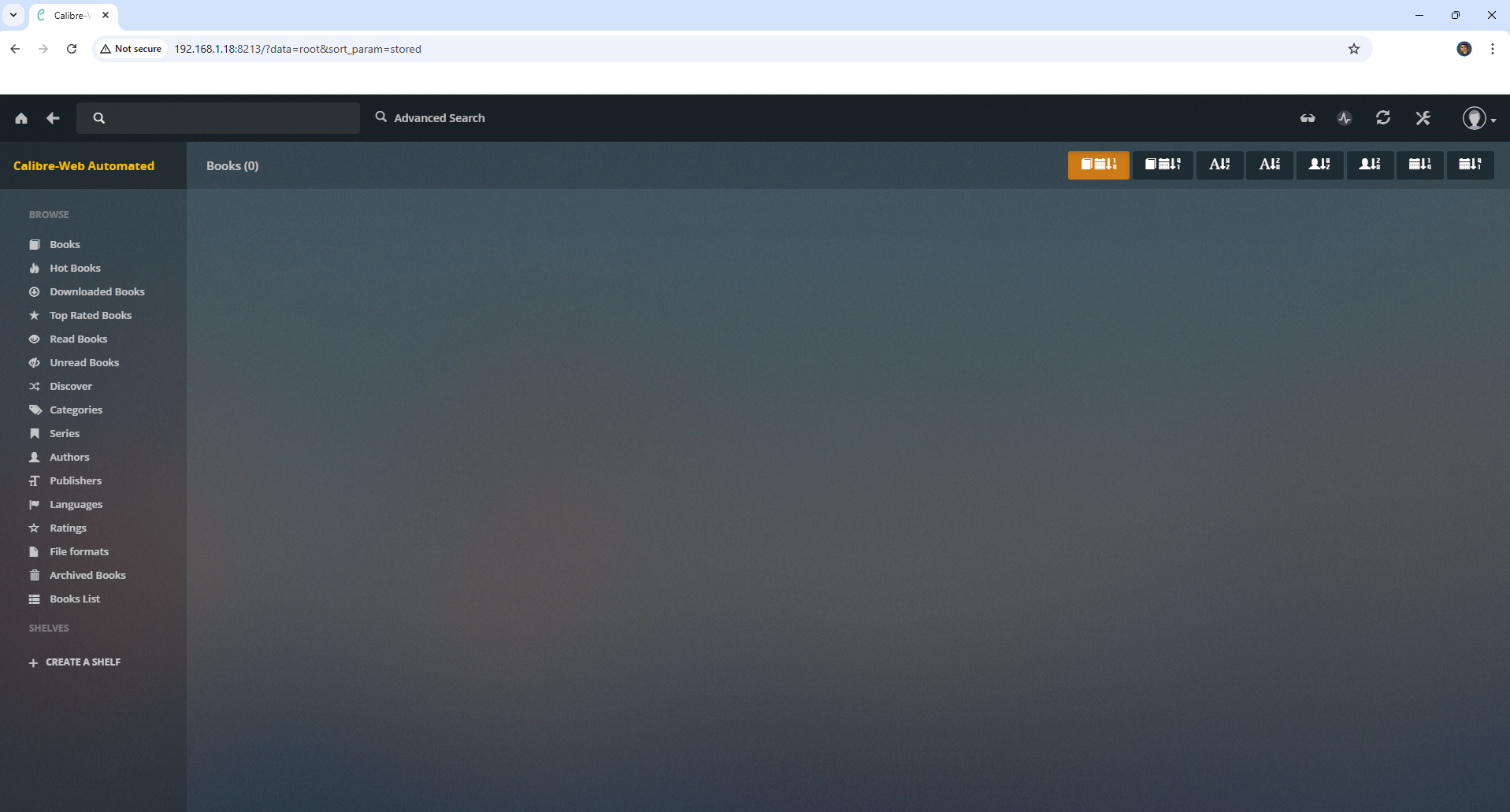
STEP 13
Upload your EPUB (Ebook) files in the ingest folder that you have previously created at STEP 4. Follow the instructions in the image below.
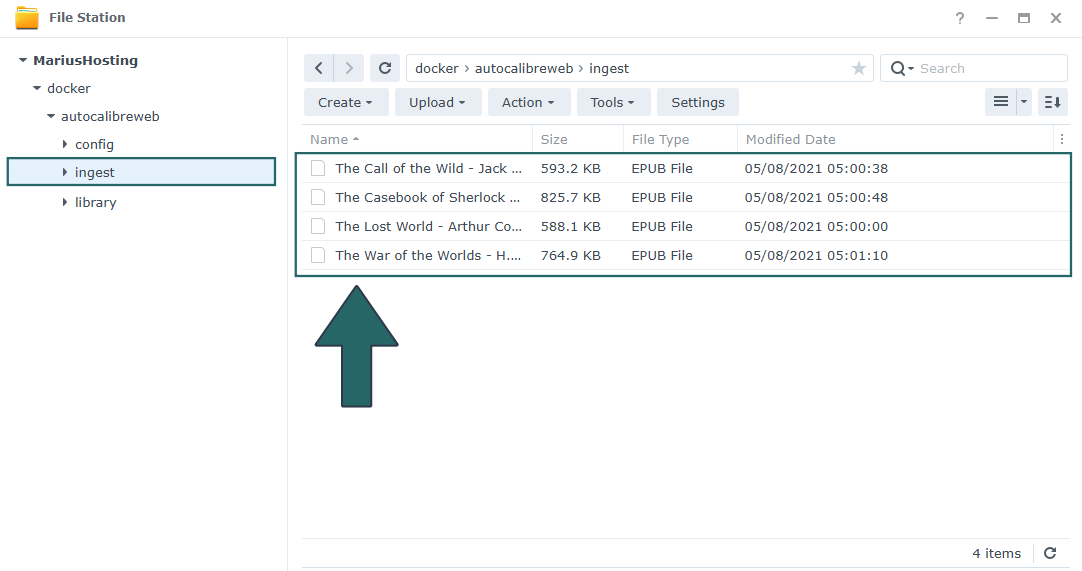
STEP 14
After you have uploaded your EPUB (Ebook) files in the ingest folder, click the refresh button in File Station. You will see that your files will disappear one by one because there are being processed by the Calibre-Web Automated container and automatically processed in the library folder. You don’t have to do anything as this is a normal behavior. Go straight to the next STEP.
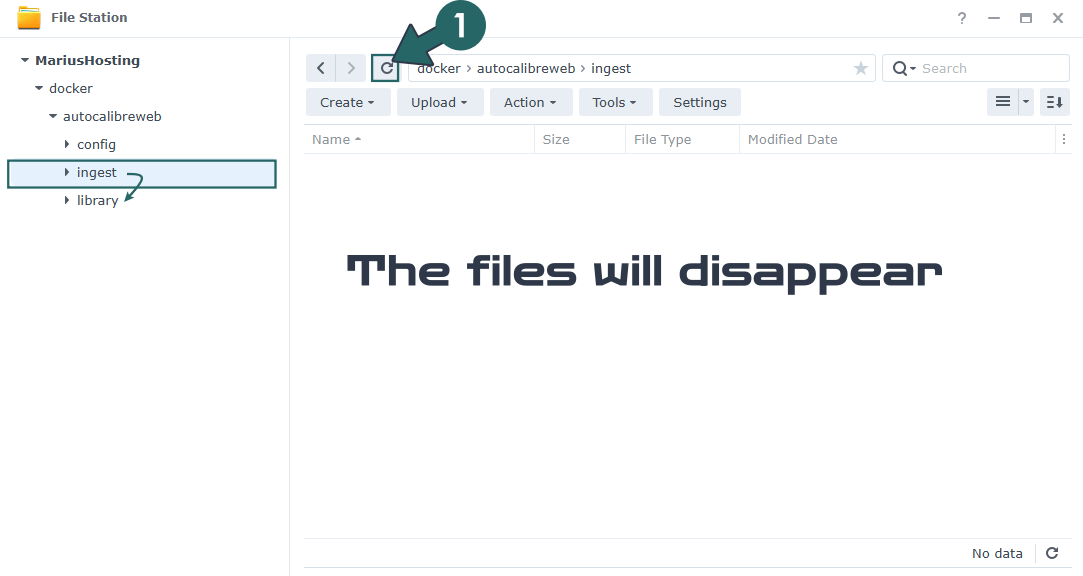
STEP 15
In the Calibre-Web Automated container, click Books. As you can see, your Ebook files that you have previously uploaded at STEP 13 are now visible and ready to be read. At the top right of the page, click on the user icon then admin. Follow the instructions in the image below.
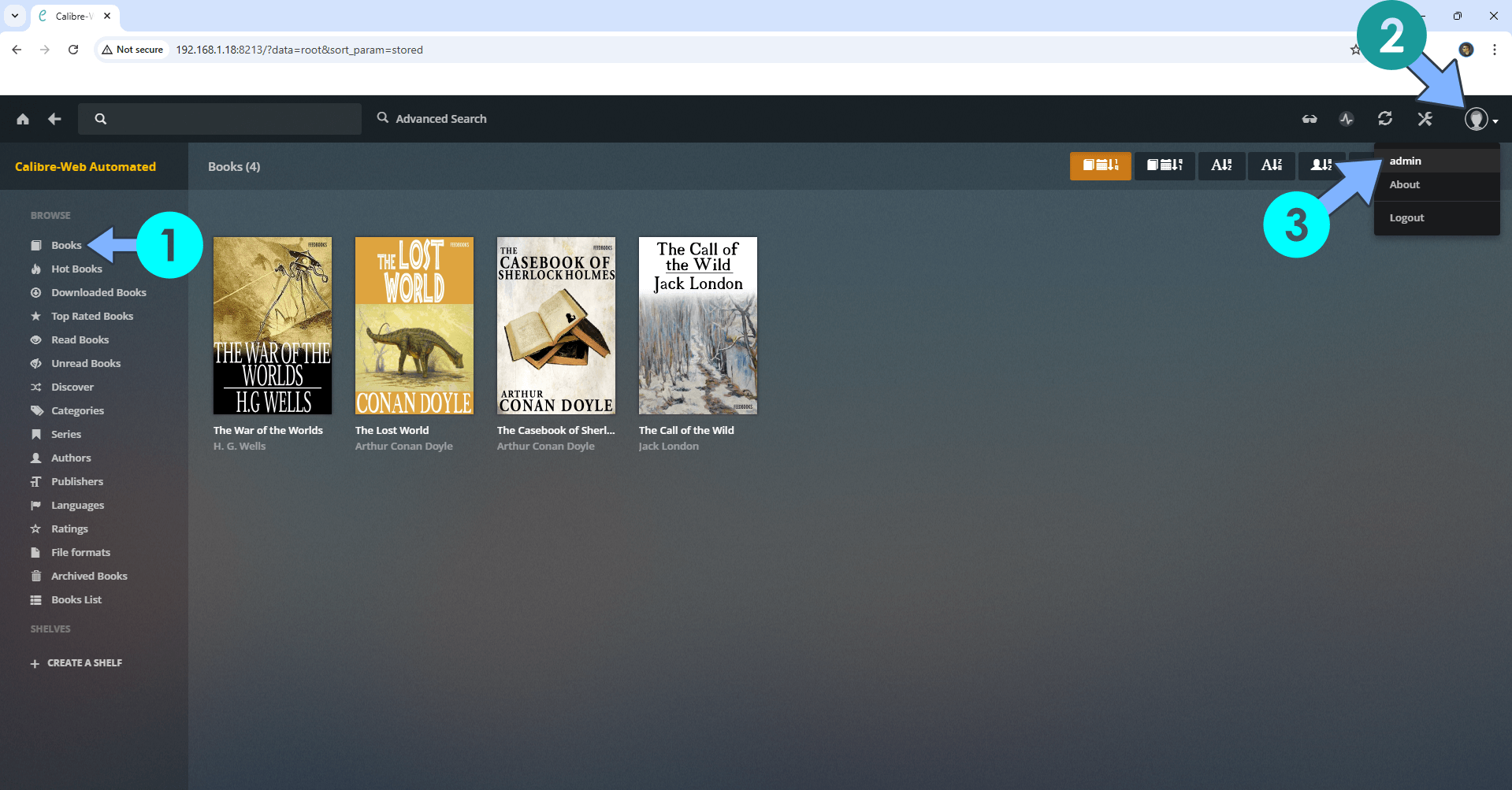
STEP 16
Change the default Username, Email and Password then scroll down the page until you find the Save button. Follow the instructions in the image below.
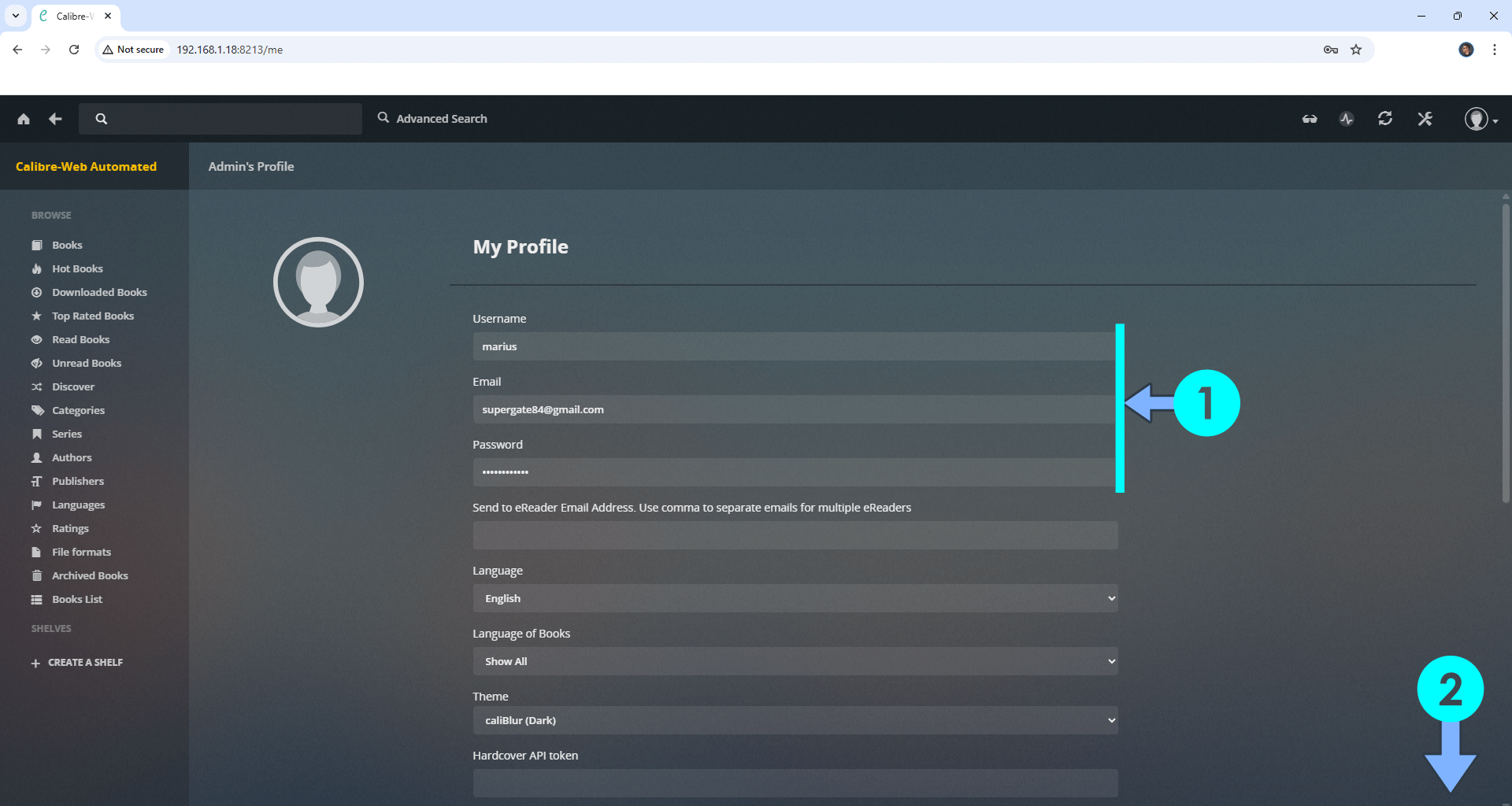
STEP 17
Click Save. Follow the instructions in the image below.
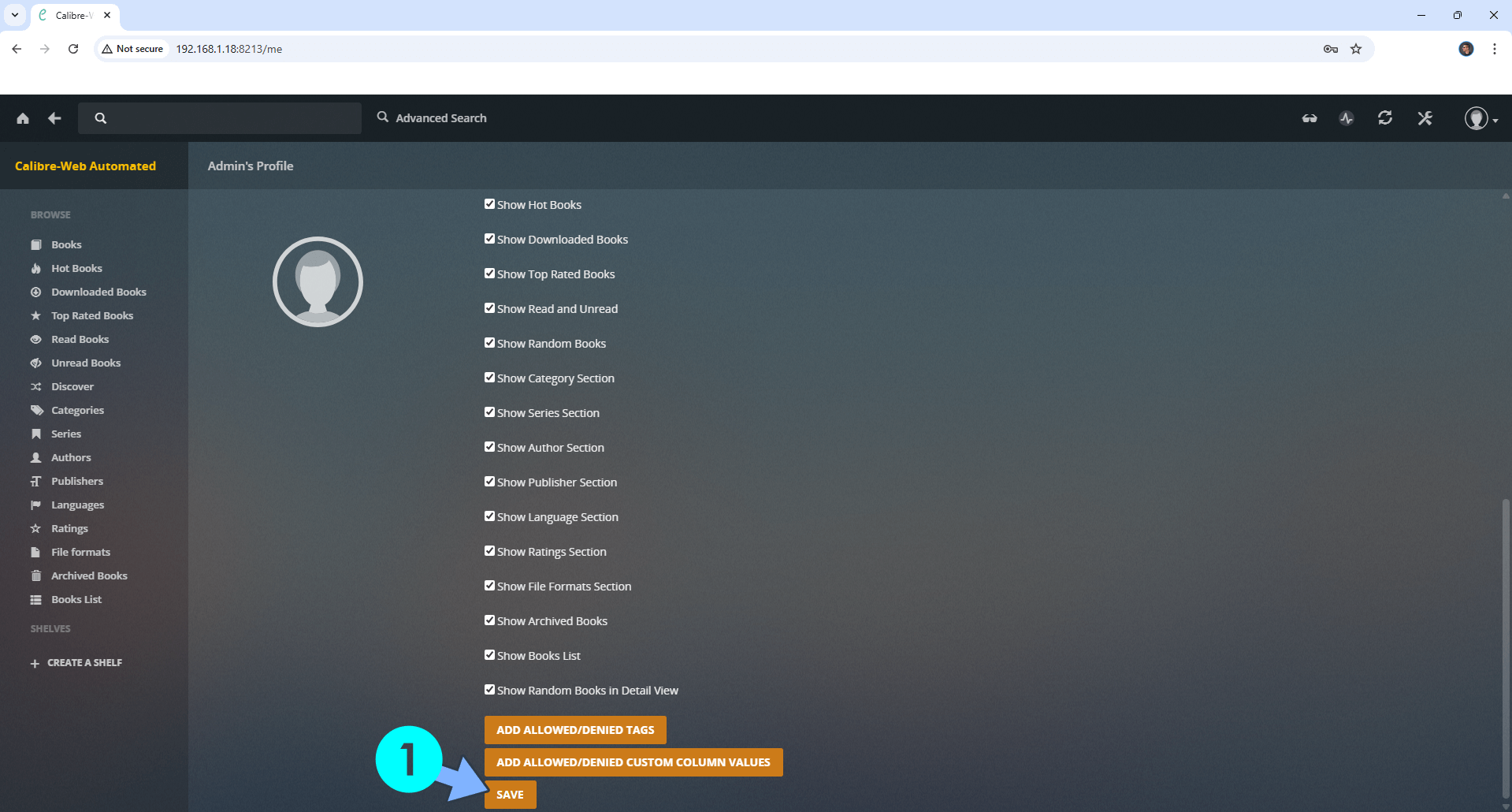
STEP 18
If you want to add more books to your Calibre-Web Automated collection, just follow STEP 13 again. Your books at a glance!
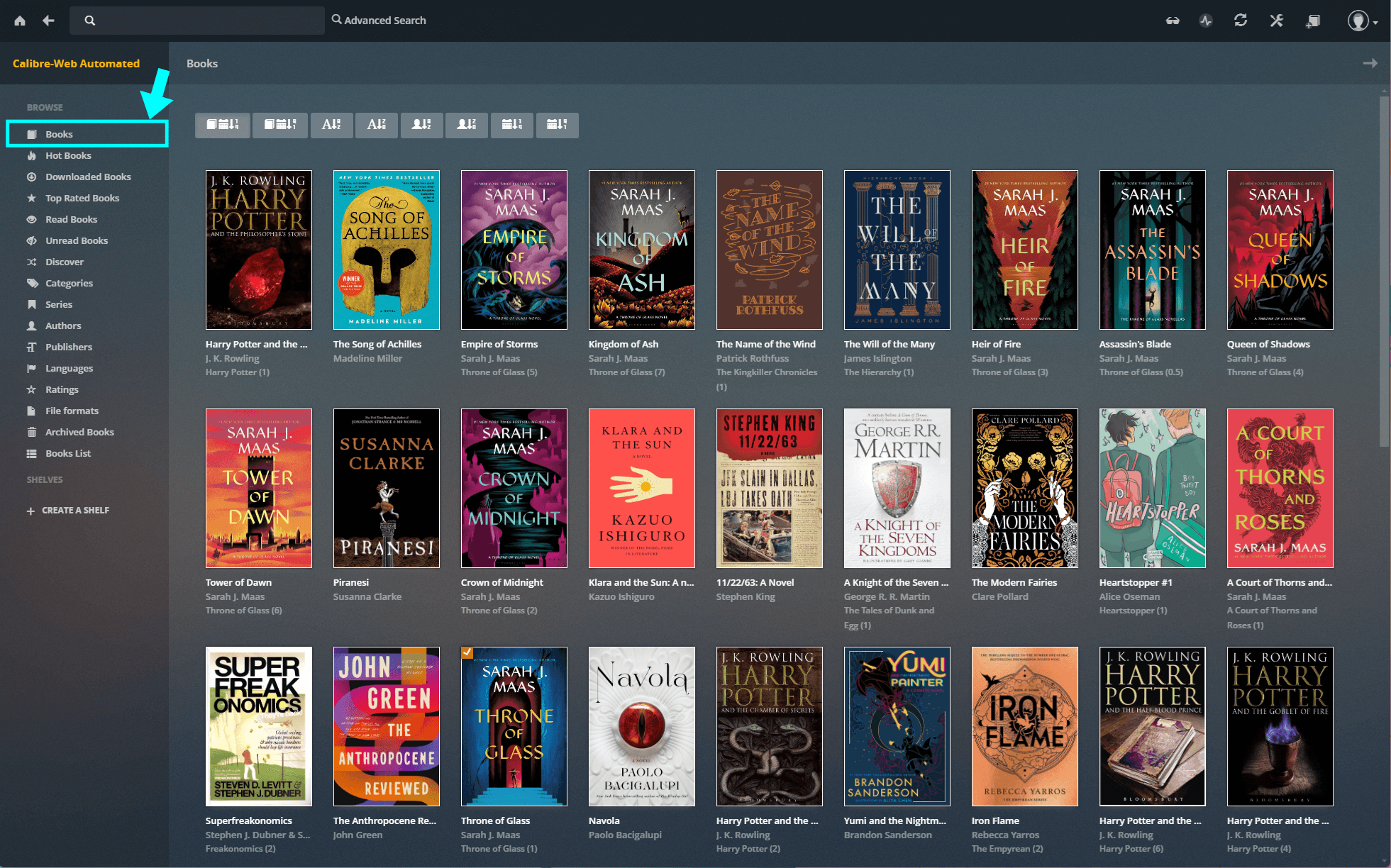
Enjoy Calibre-Web Automated!
If you encounter issues by using this container, make sure to check out the Common Docker issues article.
Note: If you want to run the Calibre-Web Automated container over HTTPS, check How to Run Docker Containers Over HTTPS. In order to make Calibre-Web Automated work via HTTPS, it’s mandatory to activate WebSocket.
Note: Find out how to update the Calibre-Web Automated container with the latest image.
Note: How to Back Up Docker Containers on your Synology NAS.
Note: Can I run Docker on my Synology NAS? See the supported models.
Note: How to Free Disk Space on Your NAS if You Run Docker.
Note: How to Schedule Start & Stop For Docker Containers.
Note: How to Activate Email Notifications.
Note: How to Add Access Control Profile on Your NAS.
Note: How to Change Docker Containers Restart Policy.
Note: How to Use Docker Containers With VPN.
Note: Convert Docker Run Into Docker Compose.
Note: How to Clean Docker.
Note: How to Clean Docker Automatically.
Note: Best Practices When Using Docker and DDNS.
Note: Some Docker Containers Need WebSocket.
Note: Find out the Best NAS Models For Docker.
Note: Activate Gmail SMTP For Docker Containers.
This post was updated on Sunday / September 7th, 2025 at 12:54 AM
